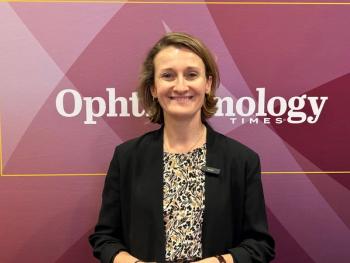
Stronger flap adherence a feature of femtosecond flaps
A study was conducted in rabbit eyes to compare flap adhesion strength of LASIK flaps created with different techniques and technology. The results indicate that significantly greater force is needed to dehisce flaps created with a 150-kHz femtosecond laser (IntraLase, Advanced Medical Optics) versus a mechanical microkeratome. Femtosecond laser-created flaps with a 150° side-cut design adhere more strongly relative to those with a 70° side-cut design.
Key Points
Chicago-The strength of LASIK flap adhesion varies depending on whether the flap creation procedure is performed with a mechanical microkeratome or a femtosecond laser. When using the femtosecond laser, side-cut design, but not side-cut energy, is a factor as well, reported Michael Knorz, MD, at the annual meeting of the American Society of Cataract and Refractive Surgery.
Dr. Knorz, professor of ophthalmology, Medical Faculty Mannheim of the University of Heidelberg, Germany, presented the results of a study he conducted to investigate adherence of flaps created using different techniques. A total of 17 New Zealand white rabbits were allocated into four groups to undergo flap creation with a mechanical microkeratome (Amadeus II, Advanced Medical Optics) or a 150-kHz femtosecond laser (IntraLase, Advanced Medical Optics) using a 70° side-cut design and a standard, 0.8-μJ, side-cut energy; a 70° side-cut design with a 1.6-μJ side-cut energy; or an inverted, 150° side-cut design with a 0.8-μJ side-cut energy.
For all femtosecond laser groups, the strength of flap adhesion was about 2.5 times greater compared with that for the mechanical microkeratome-created flaps. Comparing the two femtosecond laser groups with the 70° side cuts showed side-cut energy had no effect on flap adhesion. The flap adhesion of the inverted side-cut configuration, however, was about 1.5 times stronger than the standard, 70° side cut.
"Research by John Marshall, PhD, indicates that increasing the side-cut angle to an inverted design causes relatively less weakening of the cornea, and so it is preferable from a biomechanical perspective," he continued. "Our study shows it also has an effect to strengthen the healing."
In the study undertaken by Dr. Knorz, all flaps were allowed to heal for 75 days. Then, the epithelium was removed with a hockey knife, and an acrylic lens was glued to the flap with cyanoacrylate. Using a tension meter, the flap was dehisced, and the force needed for lifting was measured.
"We did not open the side cut first because our interest was really in seeing how much force was needed to cause the flap to dehisce," explained Dr. Knorz.
The mean force needed to dehisce the flaps created with the mechanical microkeratome was 210 g. The mean force needed to dehisce the femtosecond laser-created flaps with the 70° side cut was 492 g when using the 0.8-μJ side-cut energy and 444 g for flaps created with the 1.6-μJ side-cut energy. The latter two values were not significantly different from each other, but each was significantly greater than the flap adhesion strength of the mechanical microkeratome-created flaps.
Flaps created with the inverted side cut required an average force of 687 g for dehiscence, which was significantly greater when compared with the three other study groups.
Dr. Knorz postulated that the greater adherence of flaps created with the femtosecond laser compared with the mechanical microkeratome might be related primarily to edge geometry and its effect on healing. Compared with the mechanical microkeratome that creates a very shallow entry cut, the femtosecond laser flaps feature an almost vertical geometry that may heal more strongly because of a larger surface area. Relative to the standard 70° cut, flaps with the inverted side-cut design have an even larger wound area because the anterior stromal lamellae overlap the flap. Therefore, this side-cut design might benefit from even stronger healing.
A contribution of inflammation induced by the femtosecond laser procedure that, in turn, might promote stronger healing cannot be ruled out. A role of inflammation, however, is unclear considering that use of a higher side-cut energy, which would be expected to cause more inflammation, did not significantly affect flap adherence strength in the present study.
Dr. Knorz noted that further studies are needed to understand the underlying mechanisms and might include investigation of adherence of flaps created with another femtosecond laser (Femto LDV, Ziemer), which creates flaps with a 20° side-cut angle.
"I would suspect these flaps would not exhibit stronger healing compared with a mechanical microkeratome flap, but that hypothesis remains to be verified," he said.
In a response to a question from the audience about the downside of stronger flap adherence being greater difficulty in performing a re-lifting procedure, Dr. Knorz acknowledged that the trade-off is a possibility.
"However, I would rather face this situation in the small minority of patients who need to undergo an enhancement rather than risk destabilizing the cornea in the remaining majority of eyes," he said.
Dr. Knorz received a "Best Paper of Session" award for his presentation.
Newsletter
Don’t miss out—get Ophthalmology Times updates on the latest clinical advancements and expert interviews, straight to your inbox.



















































.png)


